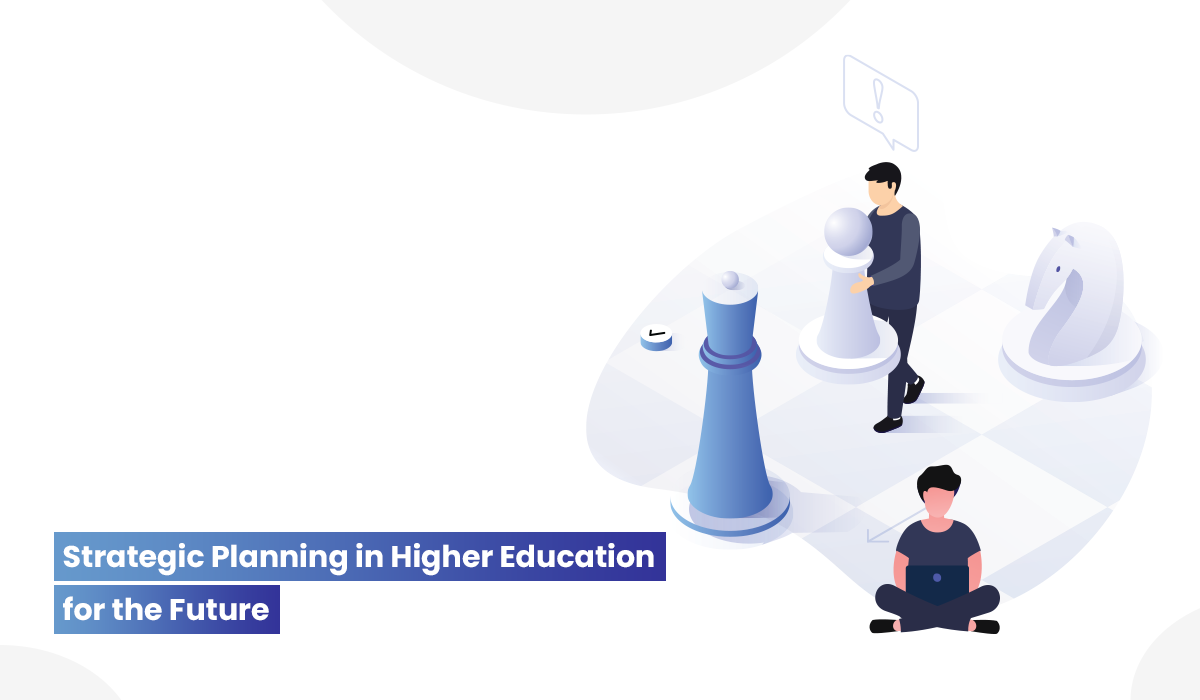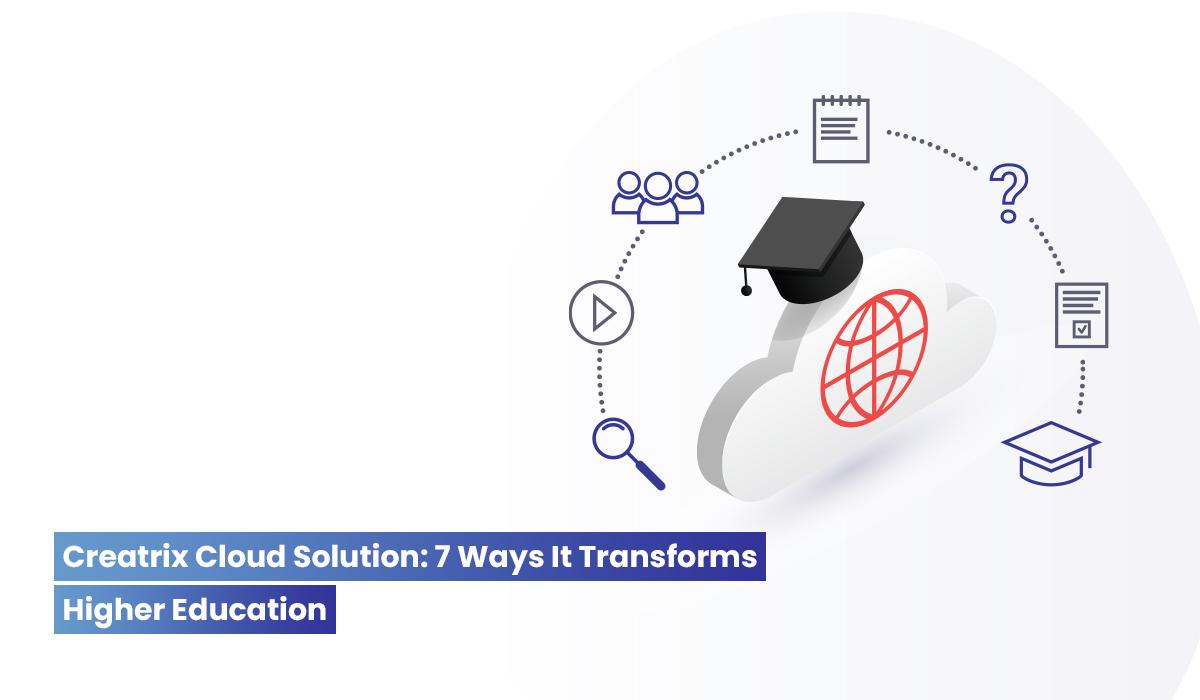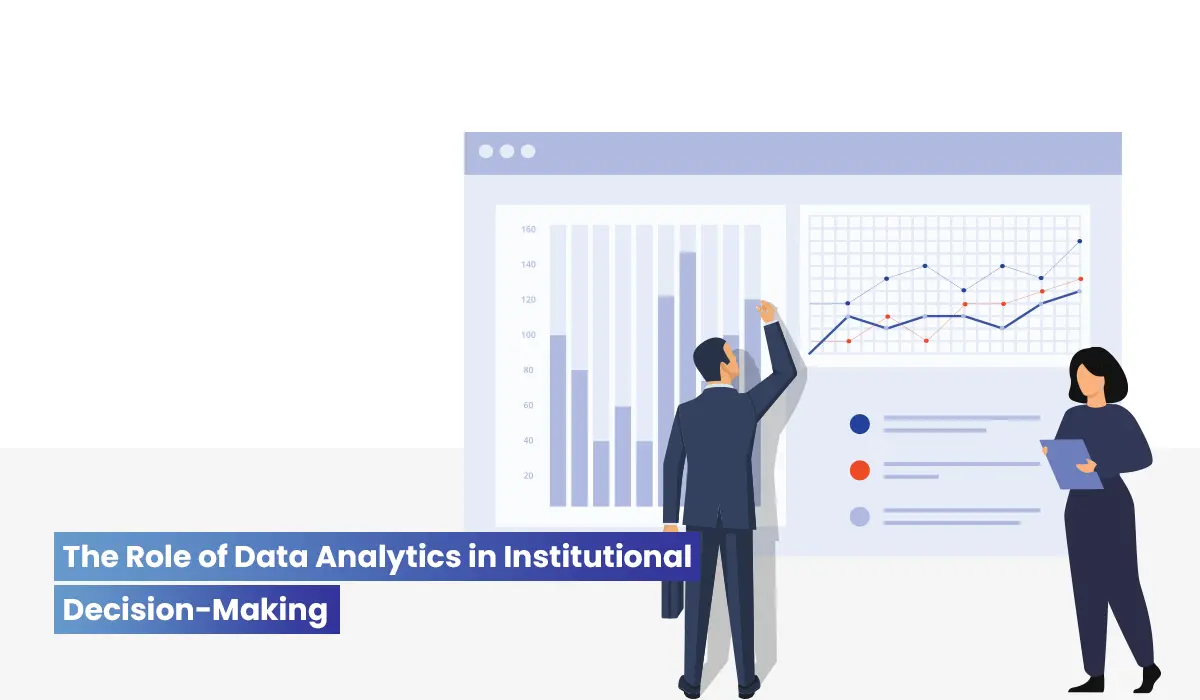Everything you need to know about Institutional Effectiveness

Institutional effectiveness refers to the ability of an educational institution to achieve its goals and objectives in a consistent and efficient manner. It involves an ongoing process of self-evaluation and improvement to measure and enhance the institution's performance and outcomes, including student success, program effectiveness, and organizational efficiency.
Institutional effectiveness is crucial for ensuring that educational institutions are fulfilling their missions, meeting the needs of their stakeholders, and providing high-quality education and services.

Sounds easy? A quality institution doesn't offer courses that no one wants to choose. It doesn’t just build earthquake-proof buildings where students don’t feel comfortable studying. Or don’t simply be graduate students, without enough skills and competencies that employers demand?
Institutional Effectiveness is an interesting, yet intriguing term.
Definition of Institutional Effectiveness
According to SACSCOC Resource Manual, "Institutional Effectiveness is a systematic, explicit, and documented process of measuring performance against the mission in all aspects of an institution."
Before we proceed;
5 things you need to know about Institutional Effectiveness
- IE meets the stakeholder needs, notably the students'
- It achieves its promise by attaining its mission and goals
- Shows excellent stewardship by taking complete ownership of the institution's well-being and utilizing resources efficiently
- It has a unique IT team that oversees everything concerning institutional research
- Takes complete accountability in demonstrating the institution's quality and responsibility
The rise in the need for institutional effectiveness
Higher education institutions are raving about institutional effectiveness efforts these days.
Reason?

In crisp, Institutional effectiveness is all about building quality in everything an institution holds within.
This blog will help you understand the role of Institutional Effectiveness in Higher Education.
Including the What, Why, How, and When of it. Read on.
Institutional Effectiveness in Higher Education?
Every institution has its mission, vision, and goals. Institutional effectiveness planning or IE planning is every higher education institution’s effort to organize evaluation, assessment, and improvement initiatives. All this is to ensure that an institution can determine how well it is fulfilling its mission and achievement of goals.
During its course, an institution undergoes an ongoing self-evaluation to measure its achievements and outcomes. Every chunk of the institution including departments, units, exams, placement, alumni, and admin, moves towards achieving the institution’s goal.
In short, with institutional effectiveness, all crevices get ironed out. There is continuous improvement in student learning, educational programs, administrative, and educational support services.
Ideally, institutional Effectiveness in Higher Education encompasses the following:
- In-depth institutional research
- A detailed program review of academic and/or administrative
- Strategic Planning
- Student Learning Outcome Assessment
- Accreditation
- Plan measurement and decision support
- Curriculum Management
Why is everyone talking about Institutional Effectiveness?
An immediate answer to why Institutional Effectiveness is due to the rapid change happening around the world. It's a known story that businesses/institutions that didn't keep pace with the changes have been thrown to nothing. Hence higher education institutions are watchful in their efforts in answering the needs of students, parents, future employers, the city, state, nation, and the whole world.
Concentrating on Institutional Effectiveness Planning helps the institution gain a kaleidoscopic view of its performance, letting them arrive at informed decisions. Institutions could either have their IE efforts scattered across or stationed in particular departments. Sometimes specialized positions are created to look after institutions’ improvement and change.
Institutional Effectiveness can help institutions in the following ways:
- Stay competitive and gain an advantage
- Evidence-based decision-making at the unit, college, division, and the university levels
- It Betters student completion rates and reduces retention
- Improve academic programs, ensure quality
- To be well-aligned with federal and state reporting requirements
- Support accreditation activities and requirements
- Connects Strategic Planning, Assessment, and Resource Allocations
- Maintain documentation for better strategic planning, assessment, and decisions regarding resource allocations
How to carry out institutional effectiveness in an institution?

All because it's a complex recipe involving multiple ingredients. Ingredients to better assessment processes, map out a change process, educate faculty, and implement change.
So, if you are starting an institutional effectiveness process, be sure to experience resistance from staff, and faculty in the beginning.
How well you plan out institutional effectiveness starts with a periodic review of your institution's mission, vision, and goals. A proper analysis of why the institution and its programs were once a failure is vital. What prerequisites would be required for its future success? And how well the institution should adopt and acquire the changes to prosper in the future.
Institutional Effectiveness Committee (IEC) or the IE Team
It is here the Institutional Effectiveness Committee (IEC) or the IE Team comes in. The IEC is a Leadership Team that helps to manage and validate institutional compliance with the comprehensive standards. The team comprises of CEO, the Chief Academic Officer, the accreditation liaison, and a representative faculty member and is nominated by the Provost.
The IEC usually has three standing subcommittees which are again appointed by the Provost;
- University Academic Assessment Subcommittee
- General Education Assessment Subcommittee
- University Support Services Assessment Subcommittee
The main charge of the committee is to develop, review, and recommend policies and procedures for institutional effectiveness. They oversee and manage everything concerning an institution including institutional research, accreditation, assessment, and planning. The professional team shares timely information accurately.
Some of the responsibilities of the Institutional Effectiveness Team are as follows;
- Design and Develop Internal Quality Systems (Academic and Administrative)
- Conducts external Assessments & Reviews
- Builds and/or Supports the Quality Assurance (QA) team to execute the annual institutional effectiveness assessment reports
- Organizes benchmark studies with national and international universities
- Facilitates organized processes for collecting, analyzing, and acting on assessment outcomes
- They help in data collection (internal and external sources), analysis, and presentation of this information for informed decision-making and policy formation
- Assists faculty and staff in conducting effective Program/Unit Assessment
- Develops the structure and timelines for ensuring the timely completion of all tasks
- Oversees the institutional review and its compliance with the Principles of Accreditation and documents evidence supporting the extent of compliance with the criteria
- Oversight of the development of the Quality Enhancement Plan (QEP); and Assurance that the institutional community is engaged in the review process and is kept informed of the progress of the review.
The Institutional Effectiveness Committee's responsibility is ongoing. It is not noted that much of their work overlaps with the Strategic Planning Council.
Institutions, in general, adopt different strategies for data collection for evaluation and assessment. Some go for a Desktop Audit process which includes review meetings, and time planning along with the planning units of the College. The results are dumped into the planning phase.
Institutional Effectiveness model

Designing a clear IE model and lining up the current efforts with the new ones gives enough room for analysis and improvement.
With the goal being to achieve the mission, vision, and goals the right way, every institution has its unique institution model. However, here are the common constituents.
Step 1: Planning. Both at the system and institutional levels. The step includes the purpose statement, strategic plan goals, annual objectives, student learning outcomes, and external reporting requirements, for indicating progress.
Step 2: Aligning Assessment and Evaluation Initiatives. A systematic process to learn how well your institution is performing and to improve the performance. First, the gaps are identified, and ways how to fill them are planned.
Step 3: Outcomes. Obtaining the result of the data from across the institution.
Step 4: Analysis. Using the data collected to assess change.
Step 5: Program Improvement Plan. This step clearly outlines the findings and program review for improvement. The documentation of results is used to monitor continuous improvements and the closing of loops.
When to do IE planning?

Since the institution by itself is an ever-changing and evolving process, its needs should be revisited continuously.
Hence any IE planning follows a yearly cycle that includes activities like re-accreditation. Data forms the main focus here, where data is collected unceasingly with simultaneous reporting.
This is followed by the review process that can occur every five to ten years or as per the needs that may arise due to;
- Changes set by new accreditation standards
- Changes due to state/federal regulations
- Recommendations as a result of accreditation review
- Change in the university's strategic planning process
Sounds laborious? Clearing the clogs and achieving institutional effectiveness might sound like a turbulent maze.
At Creatrix we ensure you don't get lost in the wilderness. We help you walk ahead, away from the exit, until you reach your destination. Our team serves as an official clearinghouse for gaining reliable data. We carry out institutional research efforts that serve all reporting requirements set by the accreditation bodies.
We take complete care of accessible reporting, and program quality, and assist in better student learning and in ongoing evaluation. In short, we work with your achievements, and outcomes, and help build a stronger system than you ever imagined. Contact higher education experts today.



